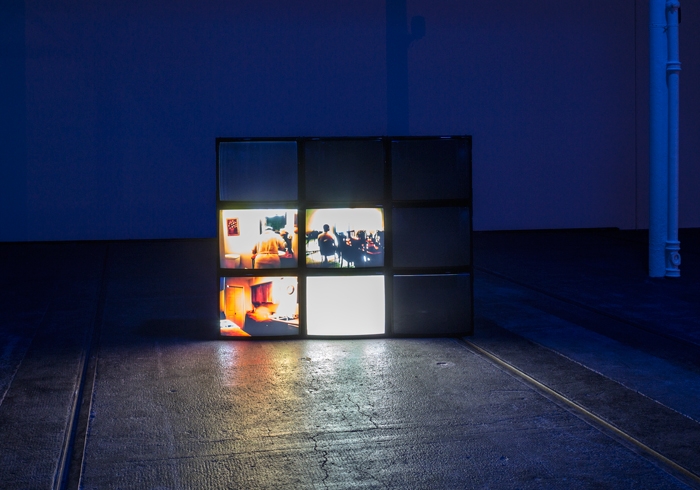In A Death in the Family (2009), the first instalment of Karl Ove Knausgaard’s Proustian autofiction My Struggle, the author reflects that ‘writing is drawing the essence of what we know out of the shadows’. This idea of a teasing-out, a lingering encounter with what is already known, might equally be applied to the work of Glasgow-based filmmaker Margaret Salmon. Cocurated by LUX Scotland and Tramway, this major survey of the artist’s work comprises three multichannel film installations – consisting of stacked monitors showing different films on each screen – and Here, there, everywhere… outside over there, a screening programme in four weeklong parts, each featuring a selection of short 16mm and 35mm films.
Many of the films, which span the period from PS (1998/2002) to this year’s Company, imbue everyday scenes with an intimacy characteristic of Salmon’s approach to her subjects. In House (2018) the camera leads us on a silent tour of empty interiors, like a memory unfolding room-by-room. As with Knausgaard’s writing, the experience of watching the film fluctuates between boredom and meditative engagement. But where Knausgaard’s six-volume memoir pursues a classic, linear narrative arc, Salmon’s visual vignettes are more epigrammatic, distillations of moments from longer lives. In Peggy (2003), for example, ostensibly a documentary record of a day in the life of an older woman, or Ramapo Central (2003), which follows the routine of a middle-aged female receptionist from work to home, the cinema-vérité form recalls Émile Zola’s definition of art as ‘no more nor less than a corner of nature seen through a temperament’.
There is a feminist agenda at play here too, in that the apparently unremarkable experiences of suburban women (housework, getting ready, shopping, going to work) offer a means of exploring gender politics. In this, Salmon’s work recalls Laura Mulvey and Peter Wollen’s iconic 1977 film, Riddles of the Sphinx, as does her use of voices that may or may not be those of the characters onscreen. Salmon’s selection and mise-en-scène of these moments allows the viewer to grasp something of the strangeness of the familiar when subjected to close scrutiny, to see the vernacular as poignant. Such cinépoetry, a shared characteristic of much recent Scottish moving image, can sometimes verge on preciousness, subscribing to the clichéd notion that the world needs visual artists to help ‘reveal’ the poetry in the prosaic (it doesn’t). For the most part Salmon avoids such pitfalls, adding texture through her layering of sound and suggested narrative, such as the repetitive accusations the husband in PS makes against his wife – “you have not been honest” – chilling in his insistent pursuit of marital discord.
Margaret Salmon: Circle, Tramway, Glasgow, 16 February – 18 March 2018
From the March 2018 issue of ArtReview
